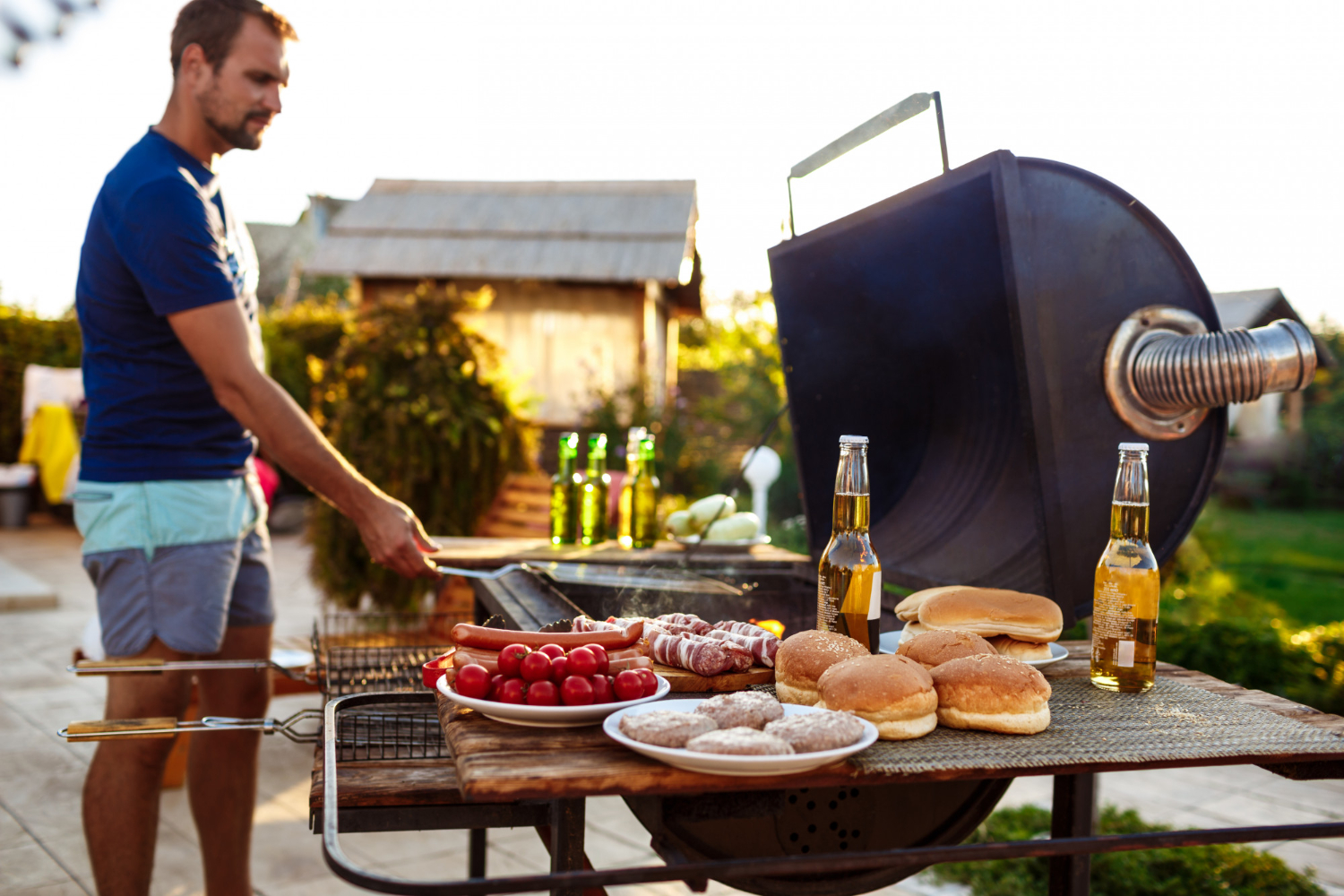What are the three types of grills
Before we embark on our journey into the heart of gas grills, let’s take a moment to understand the broader landscape of grilling options. There are three main types of grills that dominate the market: charcoal grills, electric grills, and, of course, gas grills.
Charcoal Grills:
These grills are classic and beloved for the unmistakable flavor they impart to food. Charcoal grills use charcoal briquettes or lump charcoal as fuel, providing a smoky essence that many grill enthusiasts swear by. However, they require more time and effort to light and maintain.
Electric Grills:
Ideal for indoor or compact outdoor spaces, electric grills are convenient and easy to use. They eliminate the need for charcoal or gas and heat up quickly. While they lack the smoky flavor of charcoal, electric grills are a practical choice for those seeking a hassle-free grilling experience.
Gas Grills:
Gas grills, powered by either propane or natural gas, have gained immense popularity for their versatility and convenience. They offer precise temperature control, quick ignition, and minimal cleanup. Gas grills are the go-to choice for both novice and seasoned grillmasters, providing an excellent balance between flavor and efficiency.
How does a propane gas grill work
Now that we’ve spotlighted the unique qualities of gas grills let’s zoom in on propane gas grills specifically. Propane, a liquefied petroleum gas (LPG), serves as the primary fuel source for these grills. The mechanics behind a propane gas grill are surprisingly straightforward yet ingeniously effective.
Propane gas grills feature burners positioned beneath the cooking grates. When you turn the grill on, propane flows from the tank to the burners. The burners then ignite the propane, generating heat. This heat is evenly distributed across the cooking surface, allowing you to control the temperature with precision.
The convenience of propane gas grills lies in their quick startup time. Unlike charcoal grills that require time to reach the desired temperature, propane grills heat up almost instantly, saving you valuable time and energy.
How do you set up a propane grill
Now that you’re familiar with the inner workings of a propane gas grill, let’s move on to the essential steps of setting one up for a delightful grilling experience.
- Select a Safe Location: Choose a well-ventilated outdoor area away from flammable materials. Ensure the grill is placed on a stable, flat surface.
- Connect the Propane Tank: Confirm that the propane tank is securely connected to the grill. Check for any leaks by applying a soapy water solution to the connections; bubbles indicate a leak.
- Turn on the Gas: Open the propane tank valve slowly. Turn on the grill’s burners and ignite them using the built-in ignition system or a grill lighter.
- Preheat the Grill: Allow the grill to preheat for 10-15 minutes with the lid closed. This ensures that the cooking grates reach the desired temperature for optimal searing.
- Adjust the Temperature: Once preheated, adjust the temperature using the grill’s control knobs. Achieve the perfect heat level for your specific cooking needs.
Now that your propane gas grill is set up and ready to roll, let’s explore the features that make gas grills a standout choice for outdoor cooking.
What are the best features of a gas grill
Gas grills come loaded with features that elevate the grilling experience to new heights. Here are some of the standout features that make gas grills a favorite among BBQ enthusiasts:
Precise Temperature Control:
One of the most significant advantages of gas grills is their ability to provide precise temperature control. The adjustable knobs allow you to fine-tune the heat, ensuring your culinary creations are cooked to perfection.
Quick Ignition:
No more waiting around for the coals to heat up. Gas grills ignite instantly, allowing you to start cooking within minutes of firing up the grill. This quick ignition is a game-changer for those impromptu backyard gatherings.
Even Heat Distribution:
Gas grills distribute heat evenly across the cooking surface, eliminating hot spots. This even heat distribution ensures that every inch of your grill is usable real estate, allowing you to cook multiple items simultaneously without worrying about inconsistent cooking.
Easy Cleanup:
Say goodbye to the mess associated with charcoal grills. Gas grills are generally easier to clean, with removable grates and drip trays that simplify the post-grilling cleanup process. Spend more time enjoying your meal and less time scrubbing.
Versatility:
Gas grills are incredibly versatile, accommodating various cooking styles. Whether you’re searing steaks, slow-cooking ribs, or even baking pizza, a gas grill provides the flexibility needed to explore a diverse range of culinary creations.
With the ability to choose from different types of grills and an in-depth understanding of propane gas grill mechanics and setup, you’re well-equipped to take your grilling adventures to the next level. Investing in a gas grill not only simplifies the cooking process but also enhances the overall enjoyment of the BBQ experience. So, fire up those burners, savor the sizzle, and make every backyard gathering a memorable feast!


